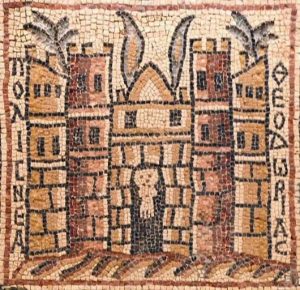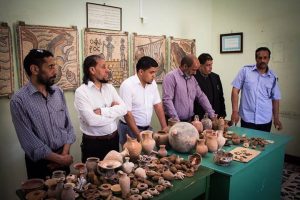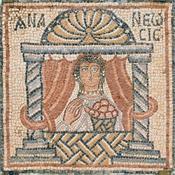By Maha Ellawati.

Benghazi, 11 May 2017:
The museum at Qasr Libya, some 80 kilometres west of Beida, has reopened after a six-year closure, with its important series of some 50 mosaic panels back in place having been removed for safety during the revolution.
The panels come from the town’s ruined 6th-century Byzantine eastern church and are considered to be among the greatest of Libya’s archaeological treasures. Another excavated church, known as the western church, is part of the later Islamic castle which today houses the museum.
After the depredations of the Vandals, the town, known in Roman times as Olbia, was refounded and beautified by the Byzantine emperor Justinian and renamed Theodorias in honour of his wife Theodora. For a number of years she had lived in nearby Apollonia, modern Sousa.
“We were given permission to reopen the museum because the situation is stable in the region,” said the head of the antiquities department Ahmed Hussein.
The reopening included a ceremony to thank people who had found objects, including a number of Roman objects, and handed them over to the museum.
All museums in Libya closed during the 2011 revolution and almost all remain closed to the public till now because of the subsequent crisis.
At the time of closure precious items were hidden away elsewhere to prevent them being stolen. That was also the case in Qasr Libya where the panels were removed by locals for their protection.
Across Libya, the tactic largely worked and there were few thefts from museums, although some artefacts left in situ were damaged or destroyed. Unfortunately the revolution also saw one of the biggest heists in archaeological history with the theft of thousands of precious items stolen from the vaults of the city’s National Commercial Bank. They have never been found.
Meanwhile, there are calls for a museum to be built in Marj, 60 kilometres west of Qasr Libya, to house archaeological finds in the area. A proposal with costings is to be submitted to the interim government of Abdullah Al-Thinni for approval.
Marj, much of which was destroyed in an earthquake in 1963, known as Barca in Roman times, the name now used in Arabic to refer to the whole of Cyrenaica. In the classical period it was one of the five cities of the Pentapolis.









